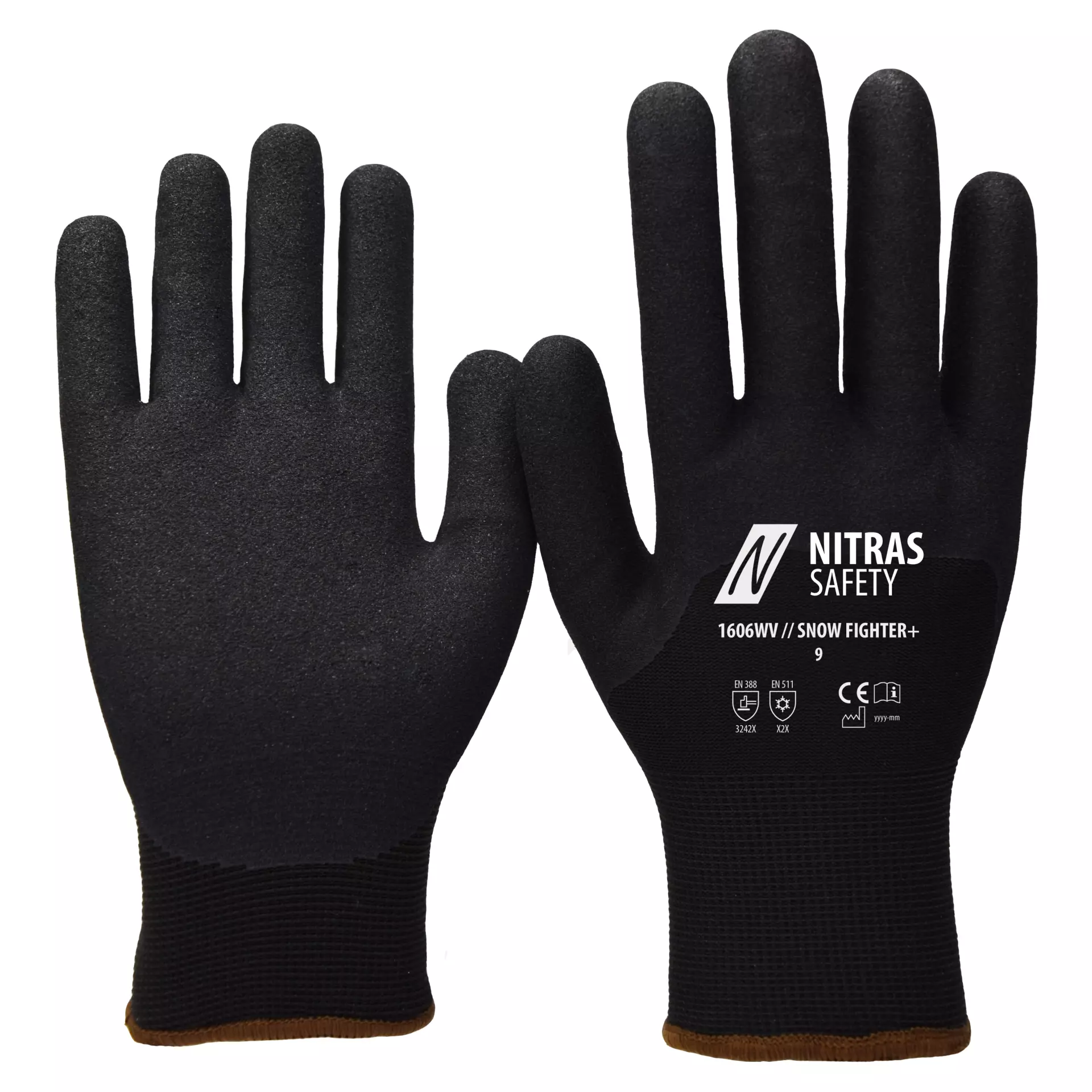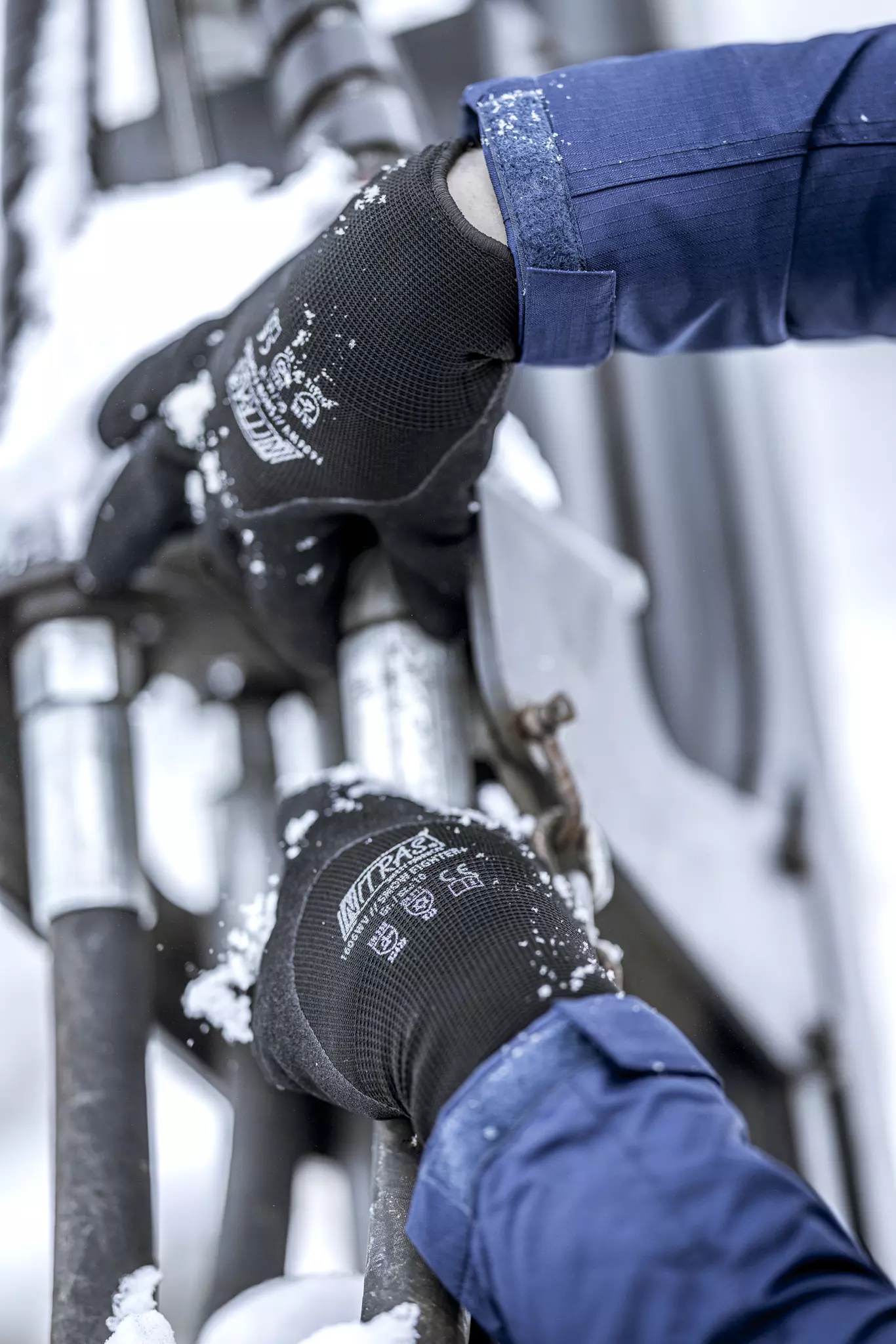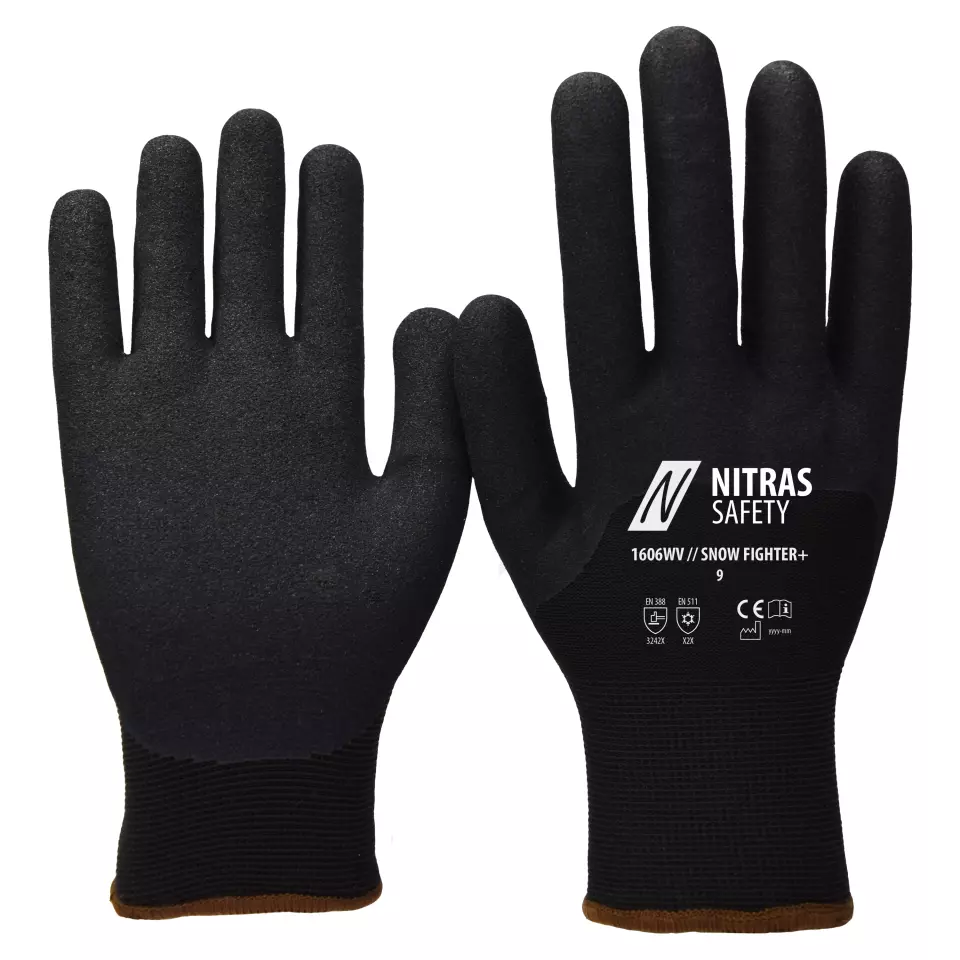

Features You'll Love

Palm Material · Nitrile, Nylon

EN 388 · Abrasion Resistance Level 3, Tear Resistance Level 4, Puncture Resistance Level 2
EN 511 · Cold Contact Level 2
Provides good resistance against scraping, scratching, and rubbing on rough or abrasive surfaces.
Offers the highest level of protection against tearing, withstanding a strong force before ripping.
Withstands moderate force from sharp objects like heavy-duty splinters or wires.
This glove provides good insulation when directly handling cold objects for a moderate duration. It's ideal for tasks like working in cold stores or handling chilled or frozen items, offering a solid mid-range of thermal protection.
Nitras
SNOW FIGHTER+ Winter Gloves, Black, 12 pairs
SNOW FIGHTER+ Winter Gloves, Black, 12 pairs
4.9 / 5
49,14 €
Price per 12 pairs
4,09 € / pair
Choose size
Shipping fee is 7,95 € for orders under 80,00 €
Features You'll Love

Palm Material · Nitrile, Nylon

EN 388 · Abrasion Resistance Level 3, Tear Resistance Level 4, Puncture Resistance Level 2
EN 511 · Cold Contact Level 2
Provides good resistance against scraping, scratching, and rubbing on rough or abrasive surfaces.
Offers the highest level of protection against tearing, withstanding a strong force before ripping.
Withstands moderate force from sharp objects like heavy-duty splinters or wires.
This glove provides good insulation when directly handling cold objects for a moderate duration. It's ideal for tasks like working in cold stores or handling chilled or frozen items, offering a solid mid-range of thermal protection.
Product description
Professional winter protection gloves featuring a seamless knitted terry cloth interior and sanded nitrile coating for enhanced grip and durability. The 3/4 coating design combines with touchscreen compatibility to deliver exceptional dexterity while maintaining warmth and protection. These gloves achieve the highest dexterity rating (Level 5) according to EN ISO 21420:2020 standards.
Product Features:
- Seamless knitted terry cloth interior for comfort and warmth
- Sanded nitrile coating for improved grip
- 3/4 coating coverage for flexibility
- Touchscreen compatible
- Knitted wrist for secure fit
Technical Details:
- Maximum dexterity rating (Level 5)
- Nylon base material with nitrile coating
- EN 388:3242X certification for mechanical protection
- EN 511:X2X certification for cold protection
Standards:
- EN 388:2016+A1:2018
- EN 511:2016
- EN ISO 21420:2020